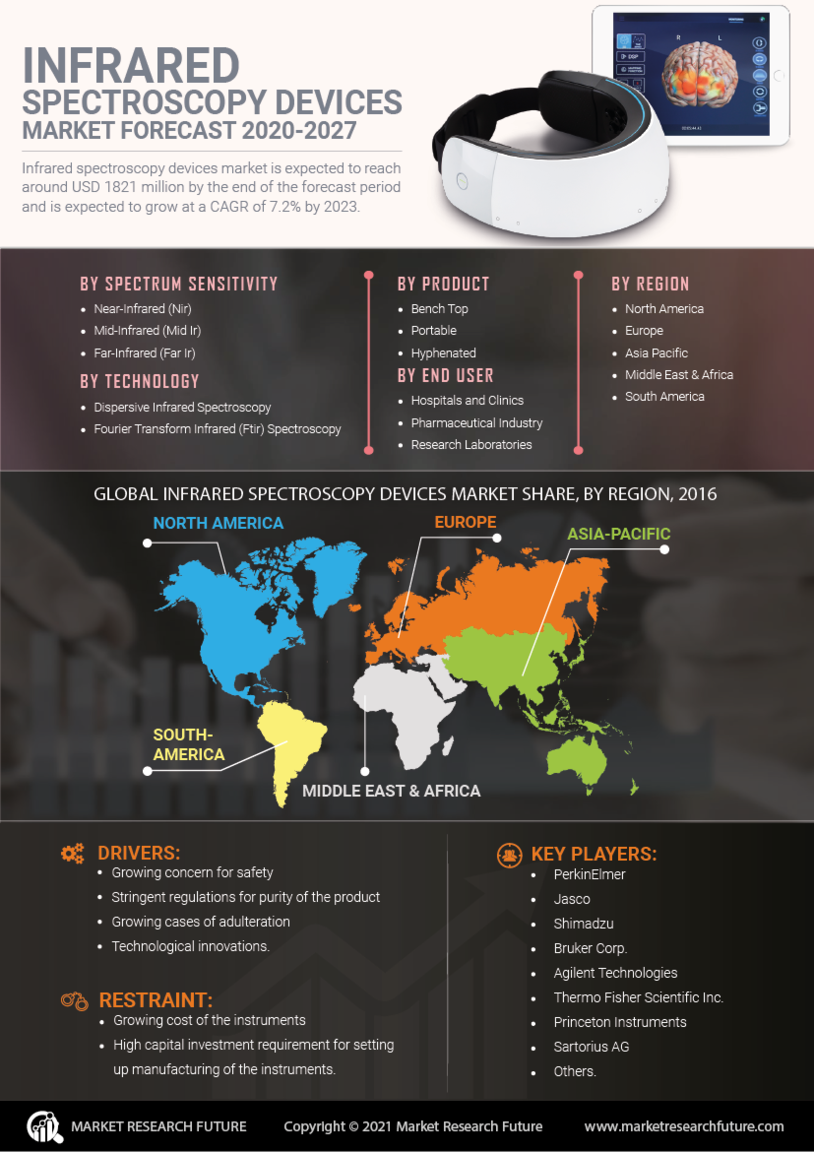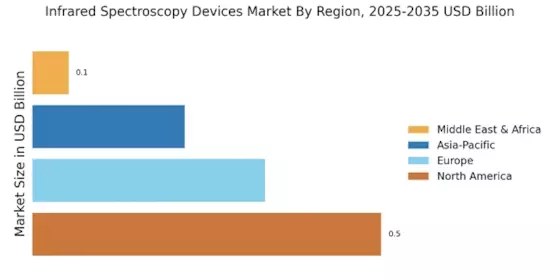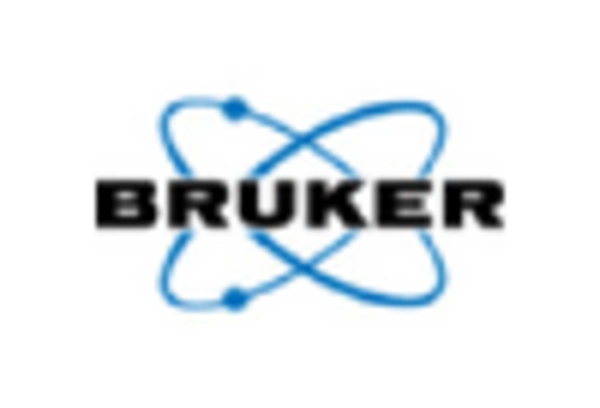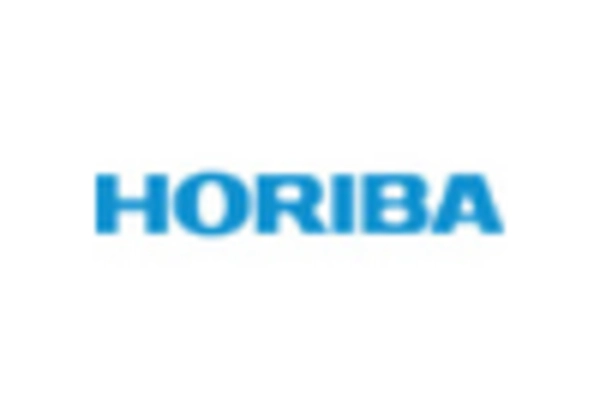Growing Demand in Healthcare
The healthcare sector is a significant driver for the Infrared Spectroscopy Devices Market, as these devices are essential for various diagnostic and analytical applications. Infrared spectroscopy is utilized in the identification of biomolecules, drug formulation, and quality control processes. The increasing focus on personalized medicine and the need for rapid diagnostic tools are propelling the demand for infrared spectroscopy devices. According to recent estimates, the healthcare segment accounts for nearly 30% of the total market share, reflecting the critical role these devices play in modern medical practices. This trend is expected to continue, with healthcare institutions increasingly adopting advanced infrared spectroscopy technologies to enhance patient care and streamline operations.
Focus on Environmental Monitoring
Environmental monitoring is becoming an increasingly vital aspect of regulatory compliance and public health, thereby driving the Infrared Spectroscopy Devices Market. These devices are employed to detect pollutants, analyze air quality, and monitor greenhouse gas emissions. The rising awareness of environmental issues and stringent regulations regarding emissions are compelling industries to adopt infrared spectroscopy for compliance and sustainability efforts. The market for environmental applications is projected to grow significantly, with an estimated increase of 5% in demand for infrared spectroscopy devices in this sector over the next few years. This growth underscores the importance of these devices in addressing environmental challenges and promoting sustainable practices.
Increased Investment in Research and Development
Investment in research and development (R&D) is a key driver for the Infrared Spectroscopy Devices Market, as companies strive to innovate and improve their product offerings. Enhanced R&D efforts lead to the development of more sophisticated and versatile infrared spectroscopy devices, catering to a wider range of applications. This trend is particularly evident in sectors such as pharmaceuticals, where the need for advanced analytical techniques is paramount. The market is expected to benefit from increased funding and collaboration between academic institutions and industry players, fostering innovation. As a result, the R&D investment is projected to contribute to a market growth rate of around 6% over the next few years, reflecting the importance of continuous improvement in infrared spectroscopy technologies.
Rising Applications in Food and Beverage Industry
The food and beverage industry is increasingly leveraging infrared spectroscopy devices for quality control, safety testing, and ingredient verification. These devices facilitate rapid and non-destructive analysis, which is crucial for maintaining product integrity and compliance with safety standards. The Infrared Spectroscopy Devices Market is witnessing a notable uptick in demand from this sector, as manufacturers seek to enhance product quality and ensure consumer safety. Recent data indicates that the food and beverage segment is expected to contribute approximately 25% to the overall market growth in the coming years. This trend highlights the critical role of infrared spectroscopy in ensuring the safety and quality of food products.
Technological Advancements in Infrared Spectroscopy Devices
The Infrared Spectroscopy Devices Market is experiencing a surge in technological advancements that enhance the capabilities and applications of these devices. Innovations such as Fourier Transform Infrared (FTIR) spectroscopy and portable infrared spectrometers are becoming increasingly prevalent. These advancements allow for more precise measurements and broader applications across various sectors, including pharmaceuticals, food safety, and materials science. The integration of artificial intelligence and machine learning into infrared spectroscopy devices is also noteworthy, as it enables more efficient data analysis and interpretation. As a result, the market is projected to grow at a compound annual growth rate (CAGR) of approximately 7% over the next five years, driven by these technological improvements.


















Leave a Comment